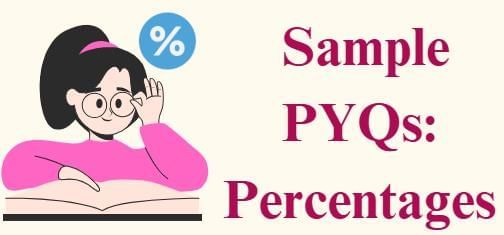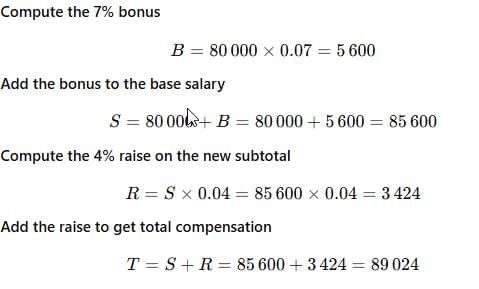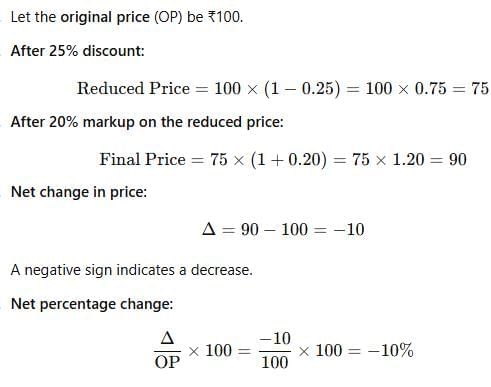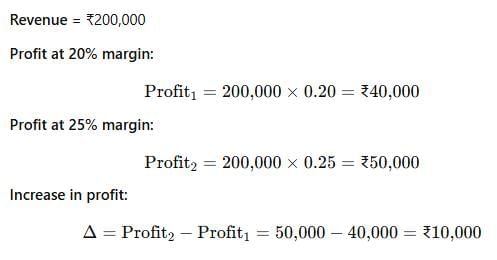Sample Previous Year Questions: Percentages | Quantitative for GMAT PDF Download
Sharpen your Percentage skills with this curated set of Sample Previous Year problems. Each question mirrors the official exam’s style and is accompanied by a clear, step-by-step solution.
 Q1. A piece of machinery depreciates by 12% in Year 1, appreciates by 8% in Year 2, and depreciates by 5% in Year 3. If its initial book value was $ 50 000, what is its value at the end of Year 3?
Q1. A piece of machinery depreciates by 12% in Year 1, appreciates by 8% in Year 2, and depreciates by 5% in Year 3. If its initial book value was $ 50 000, what is its value at the end of Year 3?
A. 44,000
B. 47,520
C. 45,144
D. 42,520
E. 46,180
Ans: Option C
Explanation:
Q2: An employee’s base salary is Rs 80,000. He receives a 7% bonus on base, then a 4% raise on the sum. What is his new total compensation?
A. Rs 89,228
B. Rs 88,780
C. Rs 89,024
D. Rs 85,024
E. Rs 88,600
Ans: Option C
Explanation:
Q3. A retailer buys an item at Rs 240 and sells it to customers at a 25% markup. Due to competition, she reduces her selling price by 12%. What is her final profit percentage on cost?
A. 8%
B. 19%
C. 12%
D. 10%
E. 18%
Ans: Option D
Explanation:
Q4. A jacket is first discounted by 25% and then marked up by 20% on the reduced price. What is the net percentage change from its original price?
A. 5% decrease
B. 10% increase
C. 15% decrease
D. 20% increase
E. 10% decrease
Ans: Option E
Explanation:
Q5. The difference between a number increased by 40% and the same number decreased by 30% is 50. What is the original number?
A. 50.33
B. 60.83
C. 71.43
D. 75.45
E. 80.78
Ans: Option C
Explanation:
Q6. The profit margin increased from 20% to 25%, and the revenue remained constant at Rs 200,000. By what amount did the profit increase?
A. ₹5,000
B. ₹10,000
C. ₹15,000
D. ₹20,000
E. ₹25,000
Ans: Option B
Explanation:
Q7. A number is first reduced by 40% and then increased by 75%. If the final value is 105, what was the original number?
A. 100
B. 190
C. 120
D. 140
E. 150
Ans: Option A
Explanation
|
121 videos|148 docs|111 tests
|
FAQs on Sample Previous Year Questions: Percentages - Quantitative for GMAT
| 1. What are the key concepts of percentages that I need to know for the GMAT? |  |
| 2. How do I approach percentage problems on the GMAT? |  |
| 3. Are there common traps to avoid in percentage questions on the GMAT? |  |
| 4. Can percentages be used in data interpretation questions on the GMAT? |  |
| 5. How can I practice percentage questions effectively for the GMAT? |  |























